#d&d history
Text
Cold Iron in folklore, fiction, and RPGs
'Gold is for the mistress—silver for the maid!
Copper for the craftsman cunning at his trade.'
'Good!' said the Baron, sitting in his hall,
'But Iron—Cold Iron—is master of them all!'
— Rudyard Kipling, “Cold Iron”
Folklore

Drudenmesser, or "witch-knife", an apotropaic folding knife from Germany
The notion that iron (or steel) can ward against evil spirits, witches, fairies, etc is very widespread in folklore. You hang a horseshoe over your threshold to deny entry to evil spirits, you carry an iron tool with you to make sure devils won't assault you, you place a small knife under the baby's crib to ward it from witches, and so on. Iron is apotropaic in many many cultures.
In English, we often come across passages that refer to apotropaic cold iron (or cold steel). "All uncouth, unknown Wights are terrifyed by nothing earthly so much as by cold Iron", says Robert Kirk in 1691, which I believe is the earliest example. "Evil spirits cannot bear the touch of cold steel. Iron, or preferably steel, in any form is a protection", says John Gregorson Campbell in 1901.
Words
So what is cold iron? In this context, it’s just iron. The “cold” part is poetic, especially – but not only – if we’re talking about either blades (or swords, weapons, the force of arms) or manacles and the like. It just sounds more ominous. There are “cold yron chaines” in The Fairie Queene (1596), and a 1638 book of travels tells us that a Georgian general (in the Caucasus) vowed “to make the Turk to eat cold iron”.
Green’s Dictionary of Slang defines “cold iron” as a sword, and dates the term to 1698. From 1725 it appears in Cant dictionaries (could this sense be thieves’ cant, originally? why not, plenty of words and expressions started as underworld slang and then entered the mainstream), and from ~1750 its use becomes much more common.

NGram Viewer diagram for 1600-2019.
In other contexts, cold iron is (surprise!) iron that’s not hot. So let’s talk a bit about metallurgy.
Metals

In nature, we can find only one kind of iron that’s pure enough to work with: meteoritic iron. It has to literally fall from the sky. Barring that very rare occurrence, people have to mine the earth for iron ore, which is not workable as is. To separate the iron from the ore we have to smelt it, and for that we need heat, in the form of hot charcoals. Throwing the ore on the coals won’t do much of anything, it’s not hot enough. But if we enclose the coals in a little tower built of clay, leaving holes for air flow, the temperature rises enough to smelt the ore. That’s called a bloomery.

clay bloomery / medieval bloomery / beating the bloom to get rid of the slag
What comes out of the bloomery is a bloom: a porous, malleable mass of iron (that we need) and slag (byproducts that we don’t need). But now we can get rid of the slag and turn the porous mass to something solid, by hammering the hot bloom over and over. And once the slag is off, by the same process we can give it a desired shape in the forge, reheating it as needed. This is called “working” the iron, hence “wrought iron” objects, i.e. forged.

a blacksmith in his forge, with bellows, fire, and anvil (English woodcut, 1603)
This is the lowest-tech version, possibly going back to ~2000 BCE in Nigeria. If we add bellows, the improved air flow will raise the temperature. So smelting happens faster and more efficiently in the bloomery, and so does heating the iron in the forge, making it easier to work with. And that’s the standard process from the Iron Age all through the middle ages and beyond (although in China they may have skipped this stage and gone straight to the next one).
If we make the bloomery bigger and bigger, with stronger and stronger bellows, we end up with a blast furnace, a construction so efficient that the temperature outright melts the iron, and it’s liquified enough to be poured into a mould and acquire the desired shape when it cools off. This is “cast iron”.
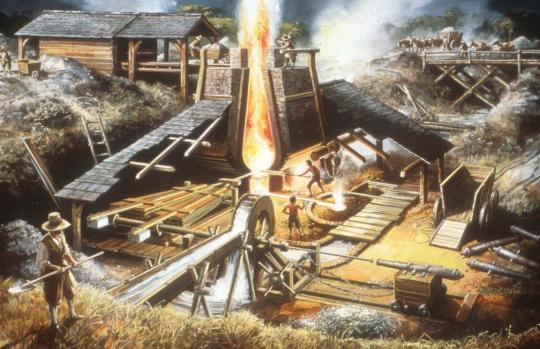
a blast furnace
So in all of this, what’s cold iron? Well, it’s iron that went though the heat and cooled off. (No heat = no iron, all you got is ore.) If it came out of a bloomery, or if it wasn’t cast, it’s by definition worked, hammered, beaten, wrought, and that happened while it was still hot.
Is there such a thing as “cold-wrought” iron? No. In fact, “working cold iron” was a simile for something foolish or pointless. A smith who beats cold iron instead of putting it in the fire shows folly, says a 1694 book on religion, so you too should choose your best tools, piety and good decorum, to educate your children and servants, instead of beating them. When Don Quixote (1605) declares he’ll go knight-erranting again, Sancho Panza tries to dissuade him, but it’s like “preaching in the desert and hammering on cold iron” (a direct translation of martillar en hierro frío).
Minor work can be done on cold iron. A 1710 dictionary of technical terms tells us that a rivetting-hammer is “chiefly used for rivetting or setting straight cold iron, or for crooking of small work; but ’tis seldom used at the forge”. Fully fashioning an object out of cold iron is not a real process – though a 1659 History of the World would claim that in Arabia it’s so hot that “smiths work nails and horseshoes out of cold iron, softened only by the vigorous heat of the sun, and the hard hammering of hands on the anvil”. [I declare myself unqualified to judge the veracity of this statement, let's just say I have doubts.] And there is of course such a thing as “cold wrought-iron”, as in wrought iron after it’s cooled off.
Either way, in the context of pre-20th century English texts which refer to apotropaic “cold iron”, it’s definitely not “cold-wrought”, or meteoritic, or a special alloy of any kind. It’s just iron.
Fiction
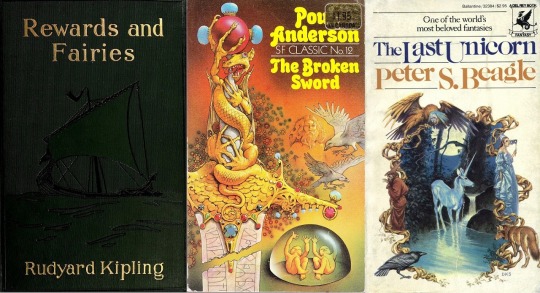
The old superstition kept coming up in fantasy fiction. In 1910 Rudyard Kipling wrote the very influential short story “Cold Iron” (in the collection Rewards and Fairies), where he explains invents the details of the fairies’ aversion to iron. They can’t bewitch a child wearing boots, because the boots have nails in the soles. They can’t pass under a doorway guarded by a horseshoe, but they can slip through the backdoor that people neglected to guard. Mortals live “on the near side of Cold Iron”, because there’s iron in every house, while fairies live “on the far side of Cold Iron”, and want nothing to do with it. And changelings brought up by fairies will go back to the world of mortals as soon they touch cold iron for the first time.
In Poul Anderson’s The Broken Sword (1954), we read:
“Let me tell you, boy, that you humans, weak and short-lived and unwitting, are nonetheless more strong than elves and trolls, aye, than giants and gods. And that you can touch cold iron is only one reason.”
In Peter S. Beagle’s The Last Unicorn (1968) the unicorn is imprisoned in an iron cage:
“She turned and turned in her prison, her body shrinking from the touch of the iron bars all around her. No creature of man’s night loves cold iron, and while the unicorn could endure its presence, the murderous smell of it seemed to turn her bones to sand and her blood to rain.”
Poul Anderson would come back to that idea in Operation Chaos (1971), where the worldbuilding’s premise is that magic and magical creatures have been reintroduced into the modern world, because a scientist “discovered he could degauss the effects of cold iron and release the goetic forces”. And that until then, they had been steadily declining, ever since the Iron Age came along.
There are a million examples, I’m just focusing on those that would have had a more direct influence on roleplaying games. However, I should note that all these say “cold iron” but mean “iron”. Yes, the fey call it cold, but they are a poetic bunch. You can’t expect Robin Goodfellow’s words to be pedestrian, now can you?
RPGs

And from there, fantasy roleplaying systems got the idea that Cold Iron is a special material that fey are vulnerable to. The term had been floating around since the early D&D days, but inconsistently, scattered in random sourcebooks, and not necessarily meaning anything else than iron. In 1st Edition’s Monster Manual (1977) it’s ghasts and quasits who are vulnerable to it, not any fey creature. Devils and/or fiends might dislike iron, powdered cold iron is a component in Magic Circle Against Evil, and “cold-wrought iron” makes a couple of appearances. For example, in AD&D it can strike Fool’s Gold and turn it back to its natural state, revealing the illusion.
Then Changeling: The Dreaming came along and made it a big deal, a fundamental rule, and an anathema to all fae:
Cold iron is the ultimate sign of Banality to changelings. ... Its presence makes changelings ill at ease, and cold iron weapons cause horrible, smoking wounds that rob changelings of Glamour and threaten their very existence.... The best way to think about cold iron is not as a thing, but as a process, a very low-tech process. It must be produced from iron ore over a charcoal fire. The resulting lump of black-gray material can then be forged (hammered) into useful shapes.
— Changeling: The Dreaming (2nd Edition, 1997)
So now that we know how iron works, does that description make sense? Well, if we assume that the iron ore is unceremoniously dumped on coals, it does not. You can’t smelt iron like that. If we assume that a bloomery is involved even though it’s not mentioned, then yes, this is broadly speaking how iron’s been made since the Iron Age, and until blast furnaces came into the picture. But the World of Darkness isn’t a pseudo-medieval setting, it’s modern urban fantasy. So the implication here is that “cold iron” is iron made the old way: you can’t buy it in the store, someone has to replicate ye olde process and do the whole thing by hand. Now, this is NOT how the term “cold iron” has been used in real life or fiction thus far, but hey, fantasy games are allowed to invent things.
Regardless, 3.5 borrowed the idea, and for the first time D&D made this a core rule. Now most fey creatures had damage reduction and took less damage from weapons and natural attacks, unless the weapon was made of Cold Iron:
“This iron, mined deep underground, known for its effectiveness against fey creatures, is forged at a lower temperature to preserve its delicate properties.”
— Player’s Handbook (3.5 Edition, 2003)
Pathfinder kept the rule, though 5e did not. And unlike Changeling, this definition left it somewhat ambiguous if we’re talking about a material with special composition (i.e. not iron) or made with a special process (i.e. iron but). The community was divided, threads were locked over this!
So until someone points me to new evidence, I’ll assume that the invention of cold iron as a special material, distinct from plain iron, should be attributed to TTRPGs.
#long post#cold iron#d&d#Changeling: The Dreaming#World of Darkness#Peter S. Beagle#The Last Unicorn#Rudyard Kipling#Poul Anderson#The Broken Sword#how to rogue#pathfinder#rogues in fiction#Operation Chaos#rogue superstitions#words of the trade#thieves' cant#ad&d#d&d history#1st edition#fey#3.5#fluff#trs
338 notes
·
View notes
Text

The most fearsome janitor in the realm, the Gelatinous Cube has been with D&D since the White Box in 1974 (where it appeared as a sort of suggested monster without stats). Taking its 10' x 10' shape from the standard corridor size in the original game dungeons, many an adventurer has been confused or intrigued by a floating sword or pile of coins drifting out of the gloom Chectowards them, and then engulfed in agony as the industrious dungeon roomba goes about its business... on THAC0 Thursday!!
2 notes
·
View notes
Text
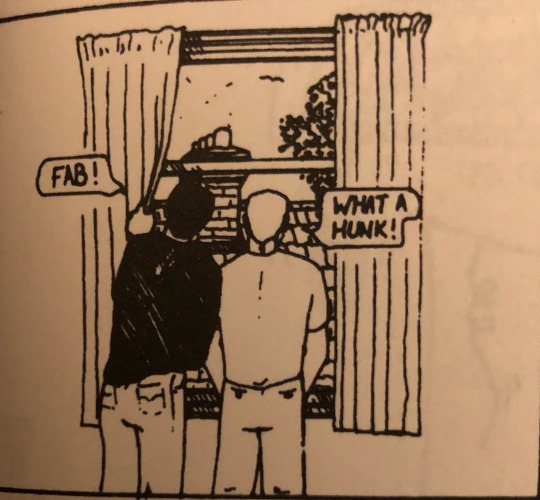
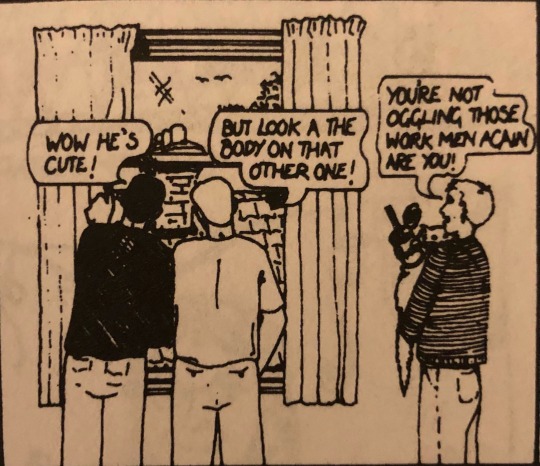
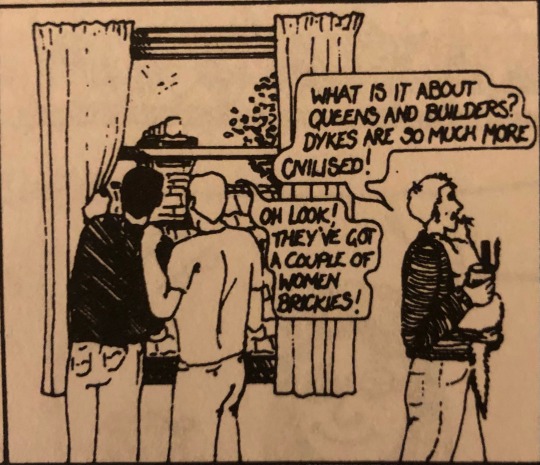
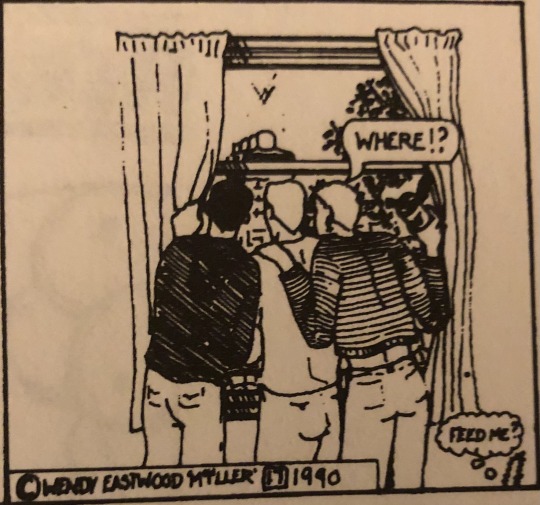
Source: Dyke Strippers; Lesbian Cartoonists A to Z , edited by Roz Warren
#I love this one it’s so true lololol#d slur#lesbian and gay solidarity#lg solidarity#lgbt friendships#lgbt positivity#gay men#gay male positivity#lesbian positivity#lgbt history#image#lgbt#lesbian#art#personal
61K notes
·
View notes
Text


[Day 161]
(Let it fade away)
Previous part | also reference to this ;)
#dddaily4sherin#grian#goodtimeswithscar#desert duo#namemc spoilers#secret life#secret life smp#secret life spoilers#traffic smp#trafficblr#my art#the song is ancient history by the crane wives :D#i apologize if i just end up drawing the skin straight until friday its very possible HAJSHAJSHA
5K notes
·
View notes
Text






source: the arquives
6K notes
·
View notes
Text
On the one hand, it's true that the way Dungeons & Dragons defines terms like "sorcerer" and "warlock" and "wizard" is really only relevant to Dungeons & Dragons and its associated media – indeed, how these terms are used isn't even consistent between editions of D&D! – and trying to apply them in other contexts is rarely productive.
On the other hand, it's not true that these sorts of fine-grained taxonomies of types of magic are strictly a D&D-ism and never occur elsewhere. That folks make this argument is typically a symptom of being unfamiliar with Dungeons & Dragons' source material. D&D's main inspirations are American literary sword and sorcery fantasy spanning roughly the 1930s through the early 1980s, and fine-grained taxonomies of magic users absolutely do appear in these sources; they just aren't anything like as consistent as the folks who try to cram everything into the sorcerer/warlock/wizard model would prefer.
For example, in Lyndon Hardy's "Five Magics" series, the five types of magical practitioners are:
Alchemists: Drawing forth the hidden virtues of common materials to craft magic potions; limited by the fact that the outcomes of their formulas are partially random.
Magicians: Crafting enchanted items through complex manufacturing procedures; limited by the fact that each step in the procedure must be performed perfectly with no margin for error.
Sorcerers: Speaking verbal formulas to basically hack other people's minds, permitting illusion-craft and mind control; limited by the fact that the exercise of their art eventually kills them.
Thaumaturges: Shaping matter by manipulating miniature models; limited by the need to draw on outside sources like fires or flywheels to make up the resulting kinetic energy deficit.
Wizards: Summoning and binding demons from other dimensions; limited by the fact that the binding ritual exposes them to mental domination by the summoned demon if their will is weak.
"Warlock", meanwhile, isn't a type of practitioner, but does appear as pejorative term for a wizard who's lost a contest of wills with one of their own summoned demons.
Conversely, Lawrence Watt-Evans' "Legends of Ethshar" series includes such types of magic-users as:
Sorcerers: Channelling power through metal talismans to produce fixed effects; in the time of the novels, talisman-craft is largely a lost art, and most sorcerers use found or inherited talismans.
Theurges: Summoning gods; the setting's gods have no interest in human worship, but are bound not to interfere in the mortal world unless summoned, and are thus amenable to cutting deals.
Warlocks: Wielding X-Men style psychokinesis by virtue of their attunement to the telepathic whispers emanating from the wreckage of a crashed alien starship. (They're the edgy ones!)
Witches: Producing improvisational effects mostly related to healing, telepathy, precognition, and minor telekinesis by drawing on their own internal energy.
Wizards: Drawing down the infinite power of Chaos and shaping it with complex rituals. Basically D&D wizards, albeit with a much greater propensity for exploding.
You'll note that both taxonomies include something called a "sorcerer", something called a "warlock", and something called a "wizard", but what those terms mean in their respective contexts agrees neither with the Dungeons & Dragons definitions, nor with each other.
(Admittedly, these examples are from the 1980s, and are thus not free of D&D's influence; I picked them because they both happened to use all three of the terms in question in ways that are at odds with how D&D uses them. You can find similar taxonomies of magic use in earlier works, but I would have had to use many more examples to offer multiple competing definitions of each of "sorcerer", "warlock" and "wizard", and this post is already long enough!)
So basically what I'm saying is giving people a hard time about using these terms "wrong" – particularly if your objection is that they're not using them in a way that's congruent with however D&D's flavour of the week uses them – makes you a dick, but simply having this sort of taxonomy has a rich history within the genre. Wizard phylogeny is a time-honoured tradition!
#gaming#tabletop roleplaying#tabletop rpgs#dungeons & dragons#d&d#worldbuilding#taxonomy#phylogeny#media#literature#history#literary history#death mention
3K notes
·
View notes
Text
I CAN'T STOP LAUGHING AT THIS SEQUENCE Zoro looks so concerned


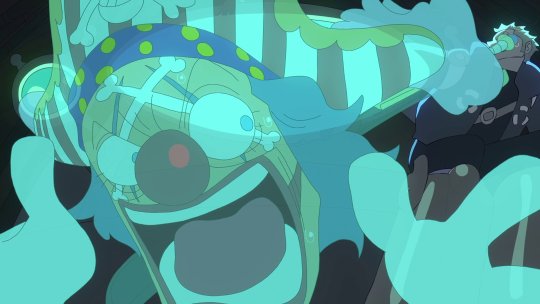
#the new art style is AMAZING#it fits one piece so well#i love how much homage they paid to the history of op#the sequence with all of luffy's fits got me ngl#WE SAW VIVI HELLO#i miss her#this was great my mind has been blown#i need to catch up quick#the fact the singer is the same guy who sang we are 😭#full circle moment#cross guild fans we are eating today#just a little snak#one piece#monkey d. luffy#buggy the clown#roronoa zoro#dracule mihawk#sir crocodile#cross guild#egghead
2K notes
·
View notes
Text
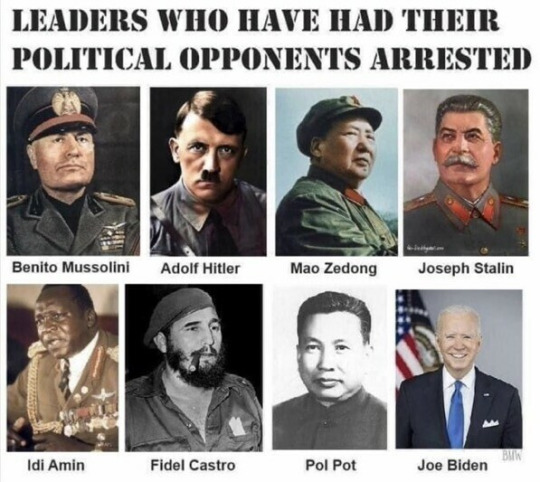
“We've become a nation of wolves, ruled by sheep.
Owned by swine, overfed, and put to sleep.
While the media elite declare what to think,
I'll be wide awake, on the edge, and on the brink.”
922 notes
·
View notes
Text

A young lion leaving an ostrich egg after failing to crack it open
By: Richard D. Estes
From: Natural History Magazine
1984
669 notes
·
View notes
Text










#us supreme court#2022 elections#2022 midterms#us congress#us house of representatives#us senate#biden administration#rep. alexandria ocasio cortez#new york#us history#President Franklin d. Roosevelt#president abraham lincoln#abortions#abortion bans#roe v. wade#scotus#us politics#news#twitter#tweet#2022#progressives#progressivism#democrats
16K notes
·
View notes
Text
The Bard's Songs
Come away, O human child!
To the waters and the wild
With a faery, hand in hand,
For the world's more full of weeping
than you can understand.
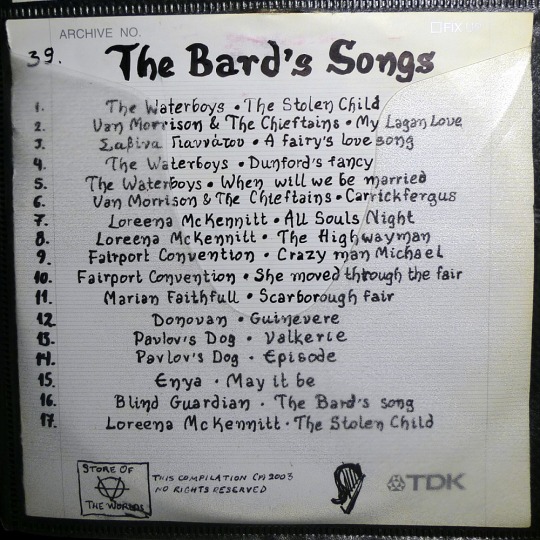
More than twenty years ago (well fuck me) I made a mixtape for our d&d campaign. That was when people used to burn audio CDs, and this was mixtape #39 (out of 271). I think I was playing an elf bard at the time.
I'm posting it here for posterity, for nostalgia, and as a snapshot of vanilla d&d lore/mood, as I experienced it back in the day. If it seems frightfully basic and predictable, well it was. Pretty much everything in that list is from Britain or Ireland or somehow evoking them. But hey, I ain't from there. It was exotic for me!
So it's vanilla and predictable, my little escapism soundtrack. And you know what else it is? A damn good compilation if I say so myself. "Fisherman's Blues" is one of best albums of all time, Loreena McKennitt is a genius, the Chieftains are giants, Pavlov's Dog are one of the few dad rock bands whose hits didn't age terribly, and hey, because I just listened to the whole thing again, when Enya stops singing "May it be" and the track continues with the Shire and the Fellowship leitmotifs, I am FULLY crying again, just bawling over here.
So here's to 2024, and the next 20 years of roleplaying, or as long as we got. Happy new year, everyone. Squeeze every drop out of life, and may your aim be true. The bard's songs will remain.
Tomorrow will take us away
Far from home
No one will ever know our names
But the bards' songs will remain
In my thoughts and in my dreams
They're always in my mind
These songs of hobbits, dwarves and men and elves
Come close your eyes
You can see them too
The Bard's Songs
The Waterboys - The Stolen Child [poem by W. B. Yeats, recited by Tomás Mac Eoin]
Van Morrison & The Chieftains - My Lagan love [trad. Irish]
Savina Yannatou - A fairy's love song [trad. Scottish, Hebrides]
The Waterboys - Dunford's fancy
The Waterboys - When will we be married? [trad.]
Van Morrison & The Chieftains - Carrickfergus [trad. Irish maybe]
Loreena McKennitt - All Souls Night
Loreena McKennitt - The highwayman [poem by Alfred Noyes]
Fairport Convention - Crazy man Michael
Fairport Convention - She moved through the fair [trad. Irish]
Marianne Faithfull - Scarborough Fair [trad. English]
Donovan - Guinevere (live)
Pavlov's Dog - Valkerie
Pavlov's Dog - Episode
Enya - May it be [LotR: The Fellowship of the Ring]
Blind Guardian - The Bard's song (In the forest)
Loreena McKennitt - The Stolen Child
This Compilation (P) 2003, Store of the Worlds, Inc. | No Rights Reserved
#trs#d&d history#yeap#prison ballads#mixtape#d&d#fluff#folk#for he comes! the human child#to the waters and the wild#with a faery hand in hand#from a world more full of weeping#than he can understand
102 notes
·
View notes
Text
youtube
Chris Holmes has a unique historical perspective on fiction writer John Eric Holmes and Holmes Basic D&D, given that he’s JEH’s son. Chris is doing cool stuff in his own right, including his fantasy art and a day job where he gets to introduce kids to D&D. Chris’s posthumous RPG project with his father called Things Better Left Alone. How much did JEH make for creating the first D&D Basic edition? Chris and Shane have different approaches to playing with alignment. What is Chris’s favorite D&D edition (it’s a trick answer). Edgar Rice Burroughs. Send in the Pinkertons! Tarzan’s super power. Weresharks. Ask Cthulhu. Zombie movies, Rob Zombie, Dragula, and Sherlock Holmes.
#d&d#dungeons & dragons#holmes basic d&d#basic d&d#history#d&d history#ttrpg#john eric holmes#chris holmes#edgar rice burroughs#podcast#interview#fiction#pulp fiction#Youtube
0 notes
Text
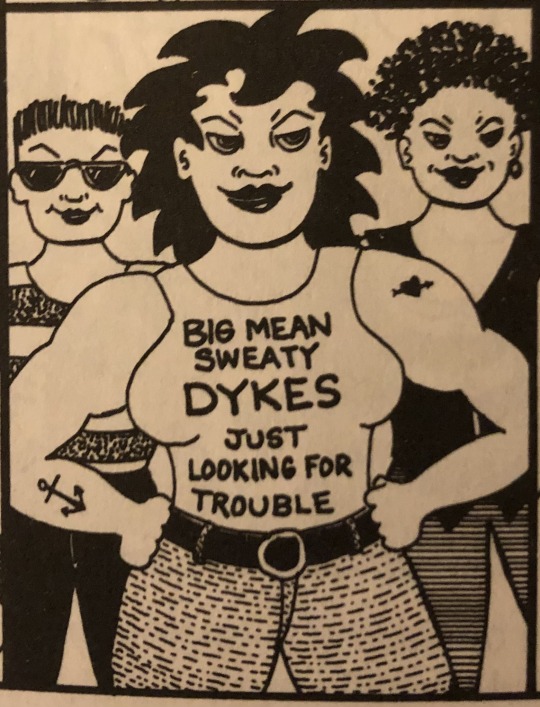

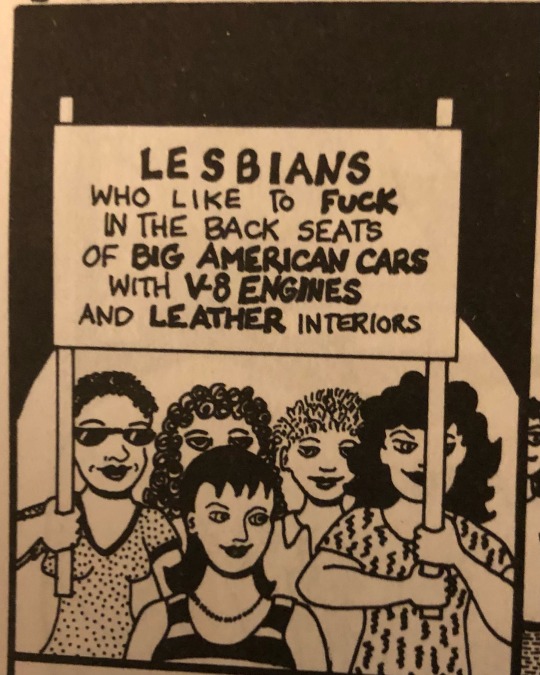
Source: Dyke Strippers; Lesbian Cartoonists A to Z , edited by Roz Warren
#d slur#lesbian history#lesbian art#lesbian positivity#lesbian cartoon#image#lgbt#lesbian#gay men#personal#art
21K notes
·
View notes
Photo
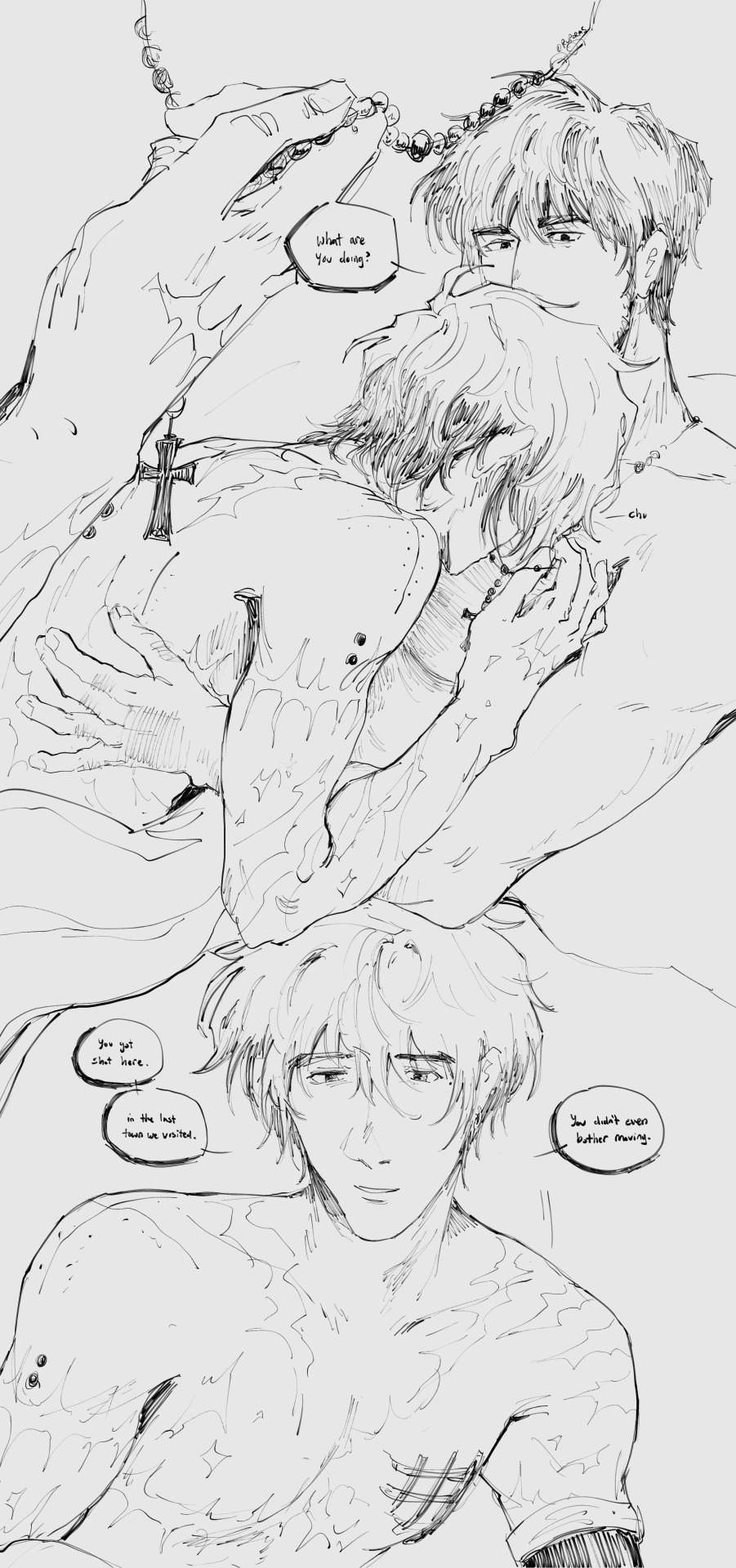


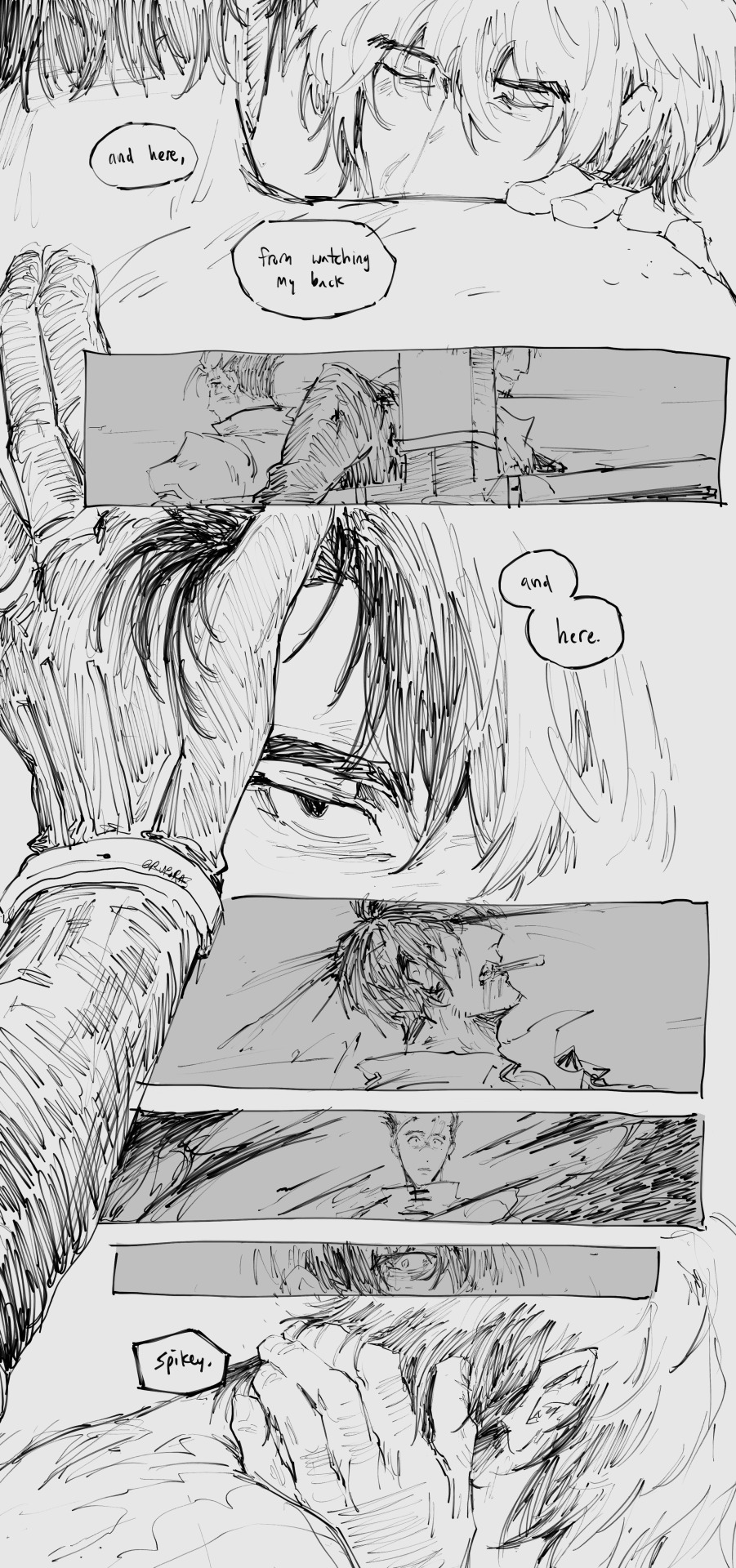

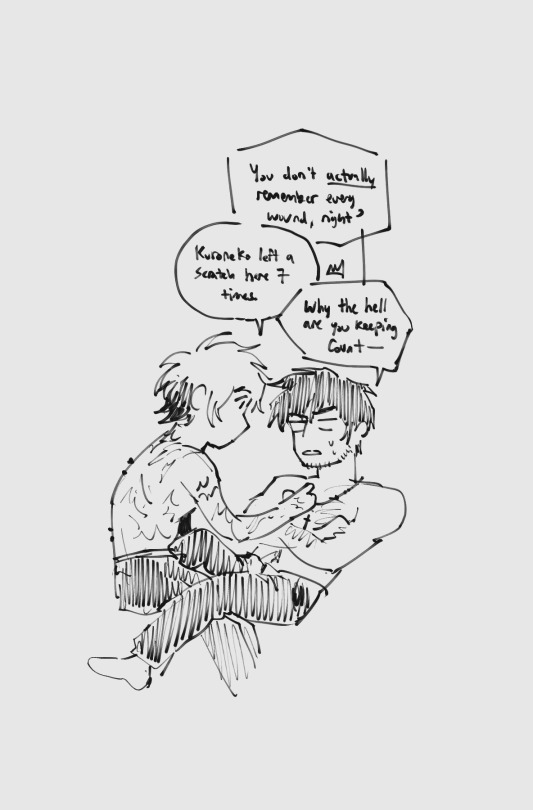
invisible scars (referenced previous talk here)
[ID: A colourless, digital Trigun comic of Vash and Wolfwood talking about Wolfwood's scars. They're both laying in bed and topless. Vash lays on top of Wolfwood, playing with the rosary around his neck. Then, Vash kisses a spot on Wolfwood's chest. Wolfwood asks, "What are you doing?" Vash smiles sadly, "You got shot here. In the last town we visited. You didn't even bother moving."
Vash props himself up over Wolfwood, who frowns slightly. Wolfwood is quiet for a moment before he says, "You remember that, huh?" Vash grabs Wolfwood's left wrist and brings it to his face. "And here." He kisses another spot there. "When you helped free the hostages from that robber..." Wolfwood dismissively says, looking away, "Was a lucky shot." Vash huffs, “Don’t brag. Jeez.”
Half of Wolfwood's expression is shown, eyes returning to Vash who is now sitting up, continuing to say, "And..." Vash goes on and kiss Wolfwood's right palm. "You got cut here, even though that girl was aiming at me." A moment from the past flashes, of Wolfwood grabbing a knife aimed at Vash, his hand bleeding.
At present, Vash moves down and puts another kiss on Wolfwood's right shoulder. "And here, from watching my back." Another memory flashes of Wolfwood and Vash back to back. Vash looks back as Wolfwood grins while holding Punisher, bleeding from multiple gunshots in his shoulder.
"And," Vash combs up Wolfwood's hair to reveal his forehead, "Here." A final memory shows Wolfwood with a regeneration vial in his mouth while getting shot on his temple. The next panel is framed in blood with Vash at the center, eyes wide and stunned in horror. The next panel is a closed up shot of Wolfwood's eye, locked on Vash's face.
Back to present, Vash’s head is bowed down as Wolfwood raises a hand to his nape and says, “Spikey.”
Wolfwood looks serious and frowns as he says, "We talked about this. Those were my decisions. They're not there anymore. Forget about them." Vash looks very sad before he smiles ruefully and says, "I still see them. All the time." He leans down so they touch foreheads. Wolfwood’s sorrowful expression can be seen as Vash says, "You protect so much. I could never forget what you've done to me. And many others..."
In the last image, they're drawn more cartoonishly. Wolfwood sweats and asks, "You don't actually remember every wound, right?" Vash points at a spot on his chest. "Kuroneko left a scratch here 7 times." Wolfwood, startled, says, "Why the hell are you keeping count—" End ID]
Credits for ID here and here
#vashwood#vash the stampede#nicholas d wolfwood#trigun#trigun maximum#another scars comic for one of the vw week days!!!! frankly i think about their scars WAY too often . most notably wolfwood's because#it really symbolizes a lot for him imo bc for vash it's a history of all the people that's ever harmed him betrayed him and the trust he has#given to humanity despite it all. its a beautiful reflection of his character and then u look at ww and presumably#since we dont really see him half naked Ever (shame) and i mean. i guess technically its a hc -- i assume he wouldn't have any scars bc#of the regen potions (which is why he doesnt have his t scars btw the regen pot took them away :pensive:)#in a way its like washing his hands of blood. giving him the body of someone who might never been involved in a fight never held a gun#but he knows thats not true yet he cant really do anything about it anyway bc he's still just human. if he stops taking the regen pots#he can't press forward. so its just a rinse and repeat and growing accustomed to whats inflicted on him because he knows it'll go away at#the end of the day. he's human but he's also not he's far beyond what could be considered a normal human but he still just is.#mortal but also not immortal. idk. i overthink about it a lot GMSKGMDK frankly i dont think it matters THAT much in the context of trimax#but it means a lot to me somehow. also thinking about how no matter how many times ww kills he's never numb to the sensation of it. maybe#the adrenaline gets to him for the beginning half but ive been rereading like.. vol 3? and that entire fight for ww#u can slowly see him spiral as he keeps on going on. anyway anyway. i love ww#ruporas art
4K notes
·
View notes
Text
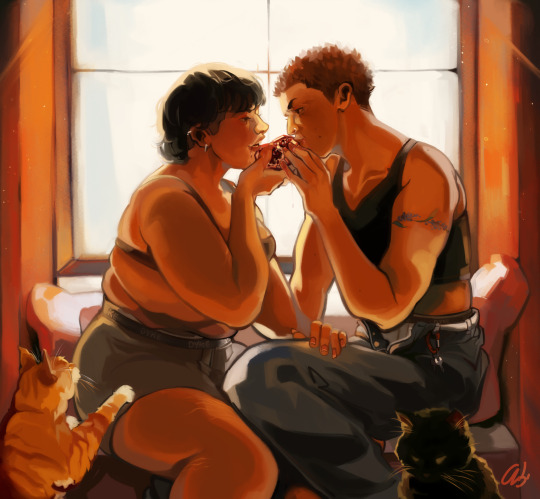

happy lesbian week! ive nothing new to post so heres an assignment i did for college last term lol
#‘but you study history and politics’ i know isnt it great#my art#artists on tumblr#lesbian#lesbian visibility week#lesbian visibility day#orange has been my new best friend the past year or so#d slur#small but its there lmao
466 notes
·
View notes
Note
Could I ask where dungeons of the kind in D&D came about? Like they’re a cultural icon now, but I don’t understand their origins very well
The dungeon crawl is a pretty standard trope in 1960s and 1970s sword and sorcery fiction and its near ancestors. A lot of ink has been spilled about how Dungeons & Dragons has become so creatively insular that it's basically emulating itself, and while there's some truth to that, the claim that dungeon crawls are part of that is a misconception. That bit is lifted more or less directly from the contemporary literature which original flavour D&D was inspired by – modern commentators tend to miss that because nobody reads sword and sorcery anymore. If you look at Fritz Leiber, Jack Vance, Robert Howard, you'll see dungeon crawls aplenty; Conan the Barbarian* went on not a few!
Of course, that just kicks the can down the road a bit: if Dungeons & Dragons got the dungeon crawl from 1960s and 1970s sword and sorcery fiction, where did they get it from? That's a question I'm less qualified to address, since literary history isn't my area. I know there are several students of early to mid 20th Century popular fiction following this blog, though; perhaps a qualified party can weigh in?
* Yes, I'm aware that Conan the Barbarian was 1930s; I'm including him in the "near ancestors" of 1960s sword and sorcery fiction
#gaming#tabletop roleplaying#tabletop rpgs#dungeons & dragons#d&d#history#ludology#media#literature#sword and sorcery#fantasy
3K notes
·
View notes